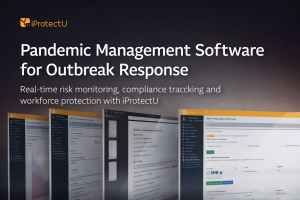Where did the Sports Day tradition come from?
The Sports Day tradition can be traced back to the late nineteenth century, alongside the development of the physical education curriculum. Influenced by Victorian values, with an emphasis on physical fitness and character development, Sports Day started out as a platform for amateur athletics, encouraging competition and camaraderie.
It is clearly still a popular summer event, with children lining up to part-take in the egg and spoon race, tug of war, or the hundred metre dash. Sports Day is a fantastic opportunity to build school morale.
However, with health and safety implications to consider, there are challenges associated with Sports Day.

Health and Safety Risks associated with Sports Day
Equipment failure: Faulty or improperly fitted sports equipment can cause injuries during use.
Choking hazards: Food consumption or chewing gum use during activities can be a choking hazard.
Allergic reactions: Participants may have allergies to sunscreen, insect bites, or other products used during the event.
Injuries: Strains, sprains, and fractures from sudden exertion without proper warm-up or from falls on uneven surfaces.
Dehydration: Failing to drink enough fluids can lead to dizziness, fatigue, and heatstroke, particularly during hot weather.
Sunburn: Overexposure to UV rays can cause painful sunburn, especially for students with sensitive skin.
Overexertion: Participants pushing themselves too far can experience muscle cramps and exhaustion.
Collisions: Competitive activities and crowded events increase the risk of bumps and accidental collision.
Please see our previous blog ‘School Sports Day Safety Management’ for a re-cap on safety guidelines during school Sports Day. https://iprotectu.com/school-sports-day-safety-management/
The Importance of Sports Day Risk Assessments
Hosting a Sports Day places a responsibility on school leaders to mitigate health and safety risks during the event. Risk assessments are crucial to prevent accidents, raise awareness of hazards and minimise risks.
A risk assessment for Sports Day should consider all participants, including students, teachers, parents, spectators, and staff at any facilities being used. Establish what safety measures you already have in place and what additional measures should be taken.
It is important to fill in all the details of your findings and the precautions you are taking. The HSE (UK) recommends including the following information:
- What are the Hazards?
- Who is at risk?
- What precautions are currently in place?
- What further precautions will be taken?
- Who will carry out the recommended actions?
- When does the action need to be completed?
As the risks or hazards may vary considerably for each sporting activity, you will need to undertake individual risk assessments for specific sports e.g. football, gymnastics, rugby. It is crucial that control measures to reduce or eliminate the risk are put in place before the activity starts. Risk assessments must be circulated to all staff involved in the activity and reviewed annually or if there is an incident, whichever comes first.
Every school is unique, and iProtectU helps schools identify and manage potential risks more efficiently, meeting the specific needs of their establishment. Our risk assessment software provides the most comprehensive range of risk assessment types and templates available in any system of its type, including Sports Day risk assessments for schools. https://iprotectu.com/risk-assessment-software/ Get in touch today!
The role of school sports, particularly through events like Sports Day, is pivotal in the holistic development of students from a young age.
These organised events not only prioritise physical health but also play a critical role in nurturing essential life skills.
Physical activity is wonderful and necessary, but it can also lead to bumps, bruises, and other injuries if proper precautions are not taken. Risk assessments help identify potential hazards.
By taking steps to mitigate the risks, schools can create a safer and more enjoyable Sports Day for everyone involved.









